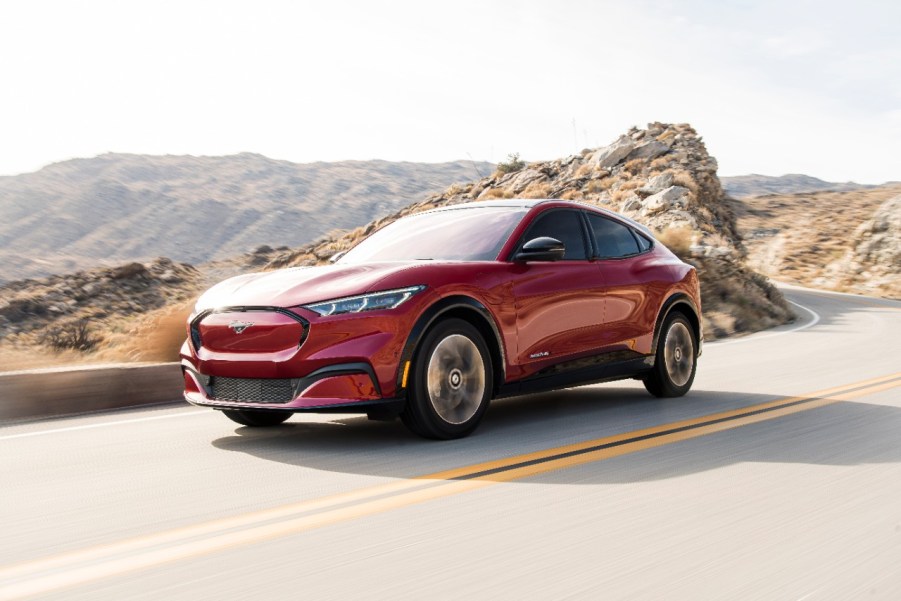
Ford CEO Confirms the Biggest Constraint on the Company’s Lofty EV Goals
Ford, like many automakers is making plans to transition to electric vehicles in the future and move away from gas-powered ones. It plans to produce several hundred thousand in just a couple of years, but there’s one major component that could throw a monkey wrench in the works. What could hinder the production of EVs for the brand and what does Ford plan to do about it?

Ford’s EV goals are hindered by battery production
Ford has invested approximately $50 billion in the production of electric vehicles. This is with the intent that the brand would build about 600,000 EVs by the year 2024. From there, Ford plans to produce around 2 million electric vehicles annually by the year 2026.
In order to make these goals a reality, the brand will need a ton of batteries to power every one of those EVs. Jim Farley, Ford’s CEO, reported in an interview with Yahoo Finance Live, “First of all, batteries are the constraint here. Both lithium and nickel are really the key constraining commodities.”
He goes on to explain that currently, Ford gets those materials all over the world. However, alarms have been raised over the possible supply chain issues this could cause as demands for the metals increase from Ford and other automakers. Then there’s the issue of processing the minerals. First, they’re sent to China to get refined and then they’re shipped to the prospective auto company, which takes time.
What Ford plans to do to help overcome it
Ford hopes to bring mining and processing of the materials back onto U.S. shores, according to Ford Authority. This would eliminate the need to send out raw minerals to China for processing and the wait time to get them back.
Also, Ford plans to use more LFP (lithium iron phosphate) batteries, which don’t need cobalt or nickel in its construction. These batteries offer faster DC charging, durability, and cheaper production, but they don’t work as well in colder climates.
The brand has set plans in motion to build a plant in the Blue Oval Michigan Battery Park to produce the batteries for its electric vehicles by 2026. To help make the goal a reality, Ford has locked in its suppliers for all the materials necessary to build these LFP units.
What Ford EVs are there currently and what will the future hold?
As of right now, Ford has released its F-150 Lightning pickup and its Mustang Mach-E SUV. With the truck, you can expect an approximately 320-mile driving range, a four-second acceleration time for a 0 to 60 mph run, and a maximum towing capacity of 10,000 lbs when properly equipped.
With its Mustang Mach-E model, you get an estimated range of 247 to 312 miles on a single charge, depending on which trim level you get. The GT Performance Edition offers a 3.5-second acceleration time while the Premium version can go from 0 to 60 mph in 6.1 seconds, according to Ford’s website.
The brand also has a few hybrid versions, like the Escape and the Maverick pickup. It even has a fully electric E-Transit commercial van. As for the future, Ford has announced the release of electric variants of the Explorer and the Bronco.
The biggest problem affecting Ford’s EV future has to do with the batteries. Supply chain issues may increase as demands for the materials that make up the battery packs increase from automakers. Plans are in motion to build its own factory to handle Ford EV battery production for its own electric vehicle lineup.


